Startup Funding Demystified: How Young Companies Raise Capital and Scale Big
Mastering the Money Game at Every Startup Stage
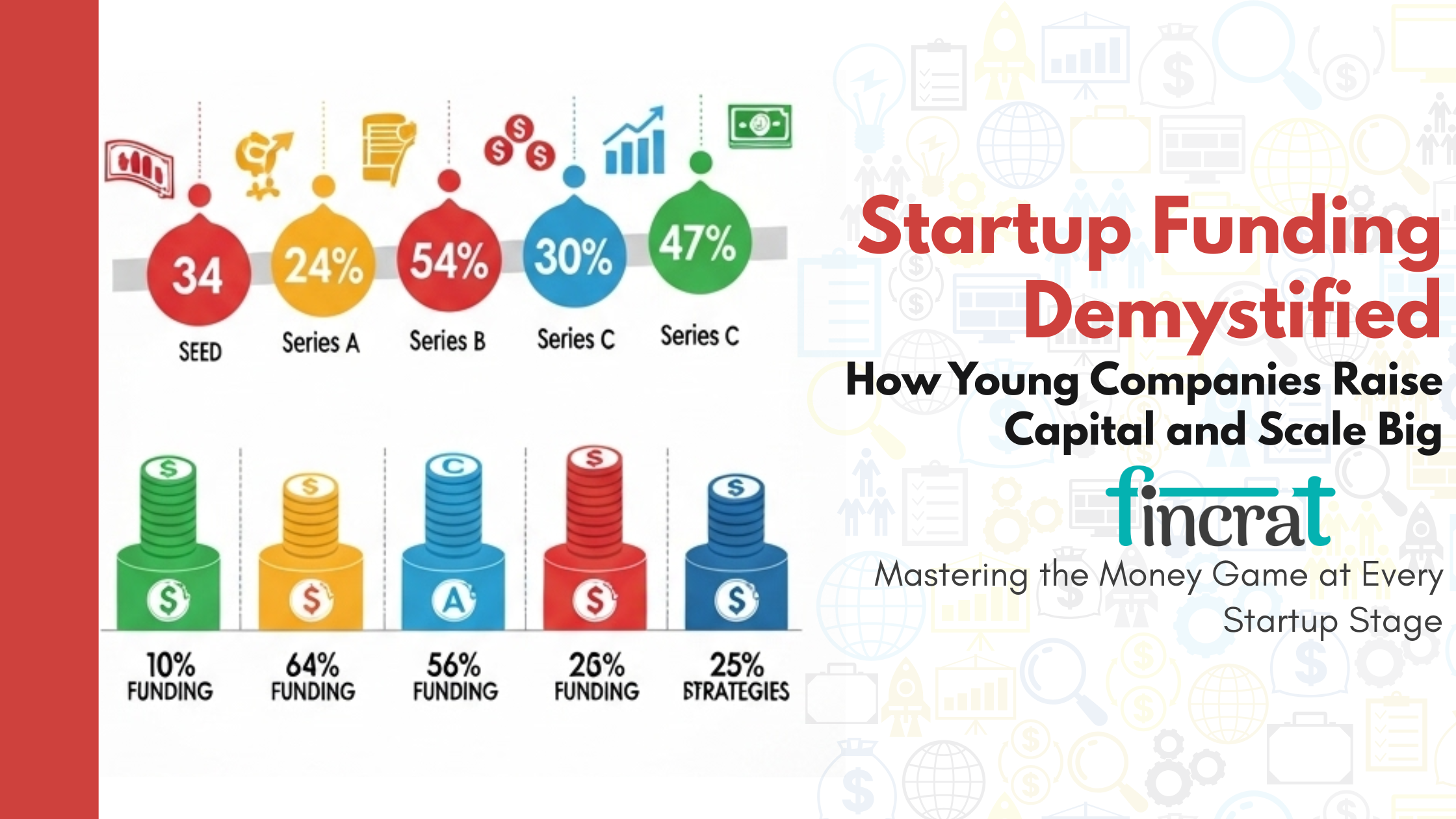
Startups are the heartbeat of innovation — ambitious, fast-paced ventures designed to disrupt industries, solve real-world problems, and scale rapidly. But behind every unicorn success story is a well-orchestrated dance of vision, execution, and, most critically, funding.
Whether you're dreaming of building the next Stripe, Airbnb, or Canva, understanding how startup funding works can mean the difference between running out of runway—or taking off. Let’s dive into the startup funding lifecycle, from scrappy beginnings to IPO glory.
What Is a Startup?
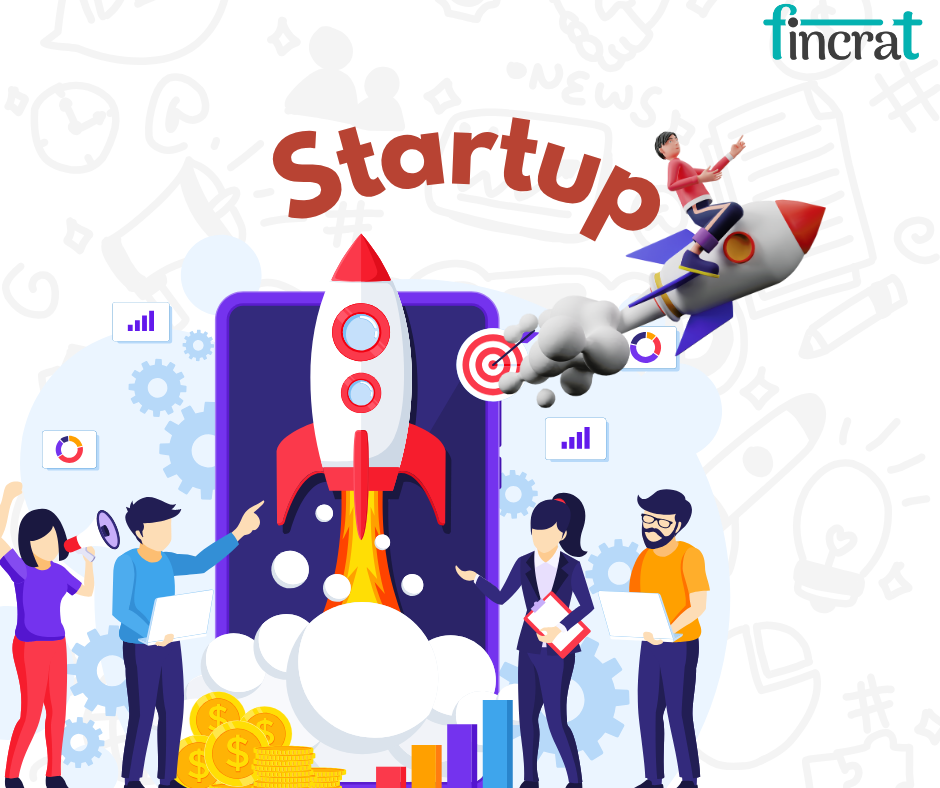
- A startup is an early-stage, youthful company formed to build a new product, service, or platform and sell it in the marketplace.
- Startups are usually started by entrepreneurs who seek to tackle a particular problem or meet a market need in a scalable and innovative manner.
- In contrast to conventional small ventures, startups are established with the aim of hyper-growth, commonly through technology to grow fast and penetrate a huge market.
- Startups typically exist in environments of maximum uncertainty and trial-and-error.
- They start with a concept and take many steps like idea validation, product development, testing market fit, acquiring customers, and funding rounds to evolve into a viable, commonly venture-backed, company capable of scaling rapidly, generating revenue, and potentially achieving a successful exit through acquisition or IPO
Key Traits of Startups
- Operate in high uncertainty
- Aim for rapid, scalable growth
- Often tech-driven and market-disruptive
- Seek external funding to fuel their journey
How Does Startup Funding Work?
- Startup funding is a process of raising funds from outside sources to fund the development and expansion of a startup business.
- Most startups start with minimal resources and no revenue, so they require funding to develop their product, expand their team, attract customers, and expand operations.
- Financing typically occurs in stages, and each stage corresponds to the firm's development, risk level, and need for capital.
The Startup Funding Stages (From Bootstrap to IPO) ?
Startup funding typically follows a structured lifecycle, where different types of investors participate at various growth stages. Each stage corresponds to the startup's level of development, risk, revenue, and capital needs.
- Pre-Seed Stage
- Seed Stage
- Series A
- Series B
- Series C and Beyond (Series D, E, etc.)
- IPO (Initial Public Offering)
1. Pre-Seed Stage
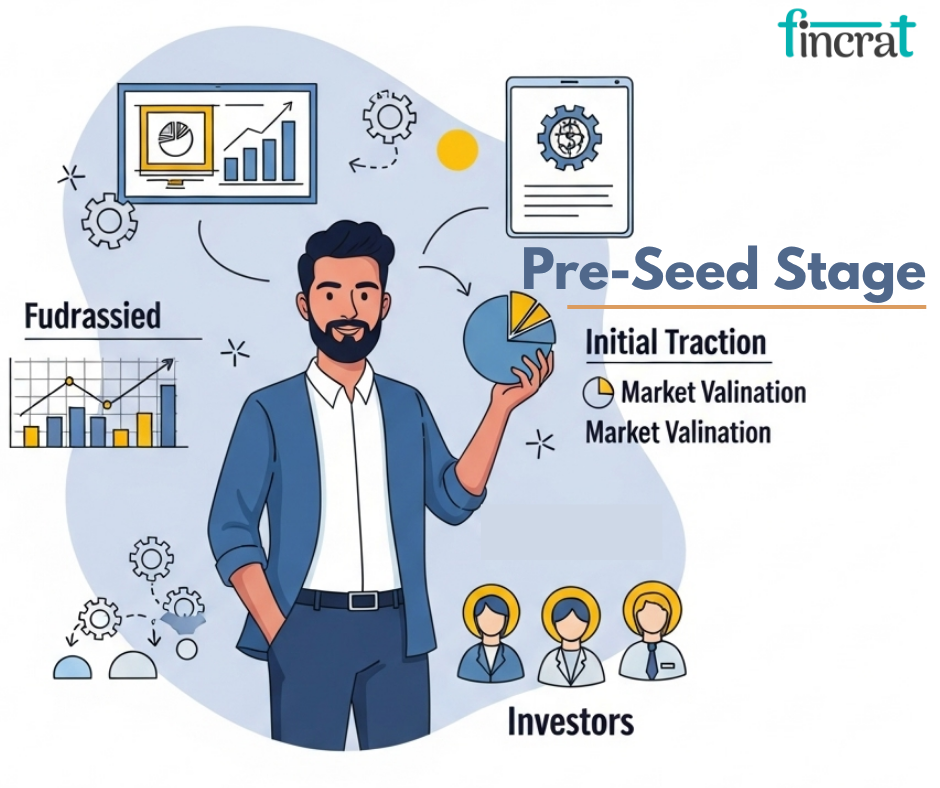
- The first funding stage, typically employed for idea validation, market testing, and early product development (such as a prototype or MVP).
- Early funding can break or make an idea. This is where startups test if the idea has viability or needs a pivot.
- Build MVP or prototype
- Perform early market validation
- Pay for basic operational expenses
- Founders (bootstrapping)
- Friends and family
- Angel investors
- Startup incubators or accelerators
- Amount Raised:Usually $10,000 – $250,000
- More than 80%- 90% of startups fail to progress beyond the pre-seed stage from a funding or product-market fit perspective.
2. Seed Stage
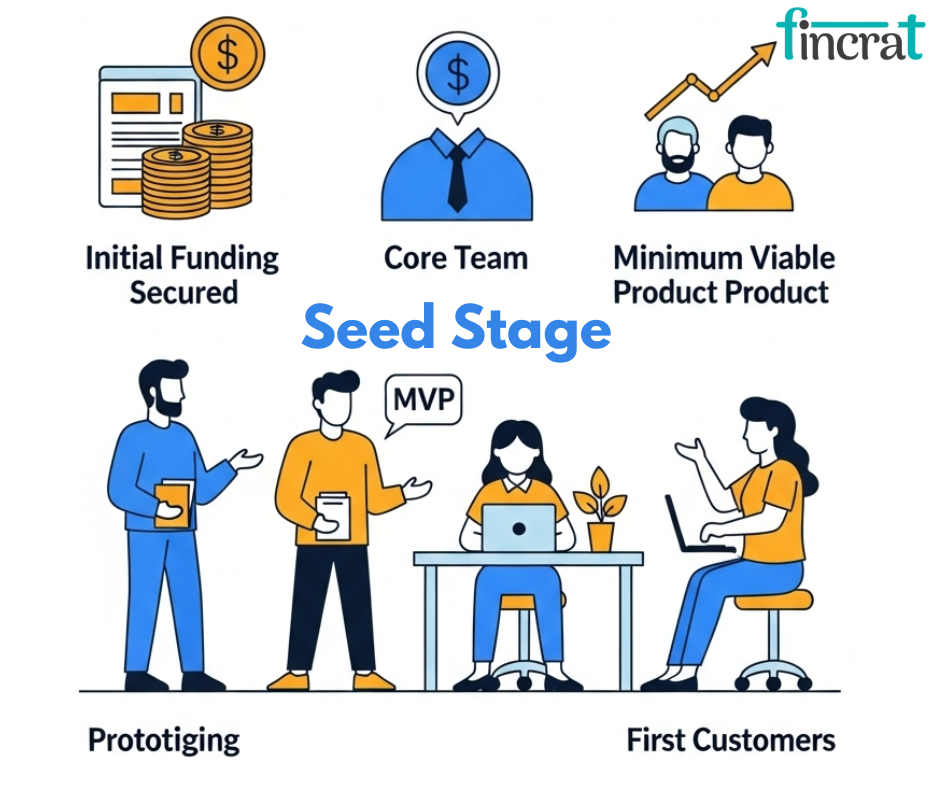
- Seed capital funds developing a proven concept into an operational business with early customers, team members, and go-to-market strategies.
- Launch MVP or beta version
- Start marketing and customer acquisition
- Employ core team members
- It's the initial institutional capital to prove product-market fit and lay the groundwork for growth.
- Typical Investors :
- Angel investors
- Seed-stage venture capital firms
- Crowdfunding sites
- Accelerators
- Amount Raised: Typically $250,000 – $2 million
- It's the initial institutional capital to validate product-market fit and lay the groundwork for scale.
- Companies that receive seed funding have a 1 in 3 chance of making it to Series A.
3. Series A
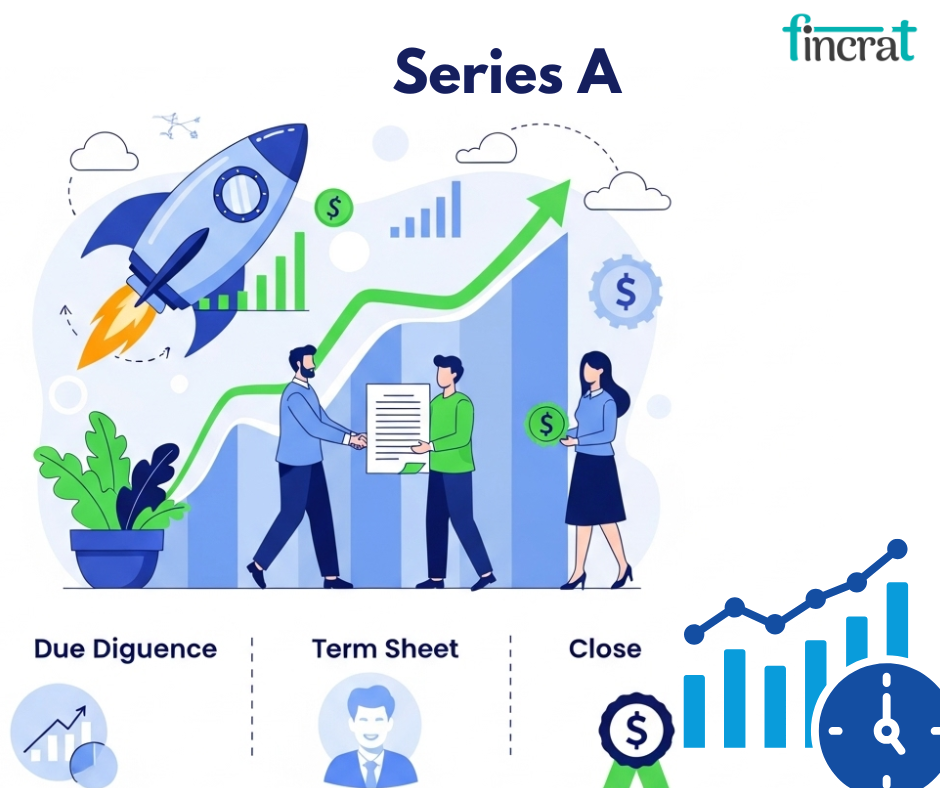
- Growth-stage capital to scale the business model—user growth, revenue, and product development.
- Demonstrates the business can scale. Investors seek robust traction, metrics, and well-defined revenue models.
- Scale marketing and sales
- Optimize product offerings
- Hire leadership team
- Typical Investors:
- Venture capital firms
- Strategic investors
- Some angel investors (follow-on rounds)
- Amount Raised: Typically $2 million – $15 million
- Only 47%-50% of startups that raise Series A ever make it to Series B.
4. Series B

- Used for growing operations further—expansion overseas, expansion into new markets, and expanding the workforce.
- Series B confirms that the startup is indeed a legitimate business with serious growth prospects.
- Expand into new markets
- Strengthen customer support and infrastructure
- Build partnerships
- Typical Investors:
- Larger VC firms
- Private equity firms
- Strategic investors
- Amount Raised: Usually $15 million – $50 million
5. Series C and Beyond
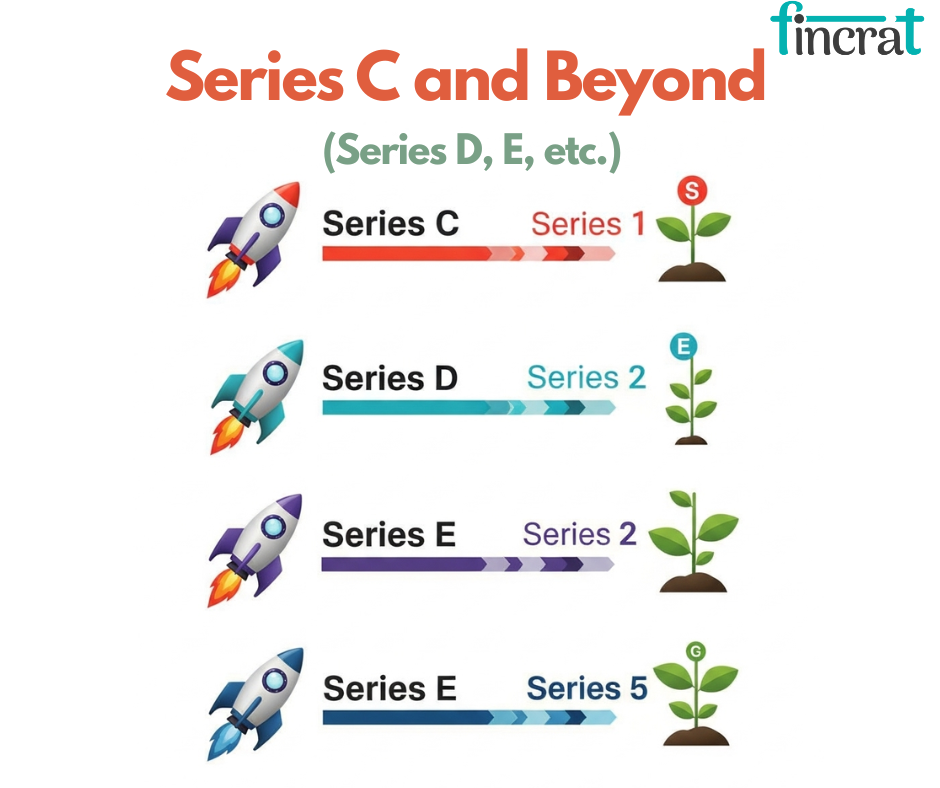
- Late-stage financing previously dominated the landscape, building new products, or ready for exit plans such as acquisition or IPO.
- This funding is an indicator of maturity and being ready to be exited or have a big impact.
- Mergers and acquisitions
- Global growth
- Diversification in products
- Ready for IPO
- Typical Investors:
- Hedge funds
- Investment banks
- Private equity companies
- Late-stage VCs
- Amount Raised: Exceeding $100 million
- Uber and Airbnb raised Series D, E, and subsequent rounds prior to going public.
6. IPO (Initial Public Offering)

- Shares are issued to the public via a stock exchange, and the company becomes a public company.
- Raise a lot of capital
- Give liquidity to initial investors
- Build branding and market trust
- An IPO is a significant milestone, usually the terminal goal for high-growth startups and their investors.
Bonus Funding Mechanisms You Should Know
1. Bridge Rounds (Interim Funding)
- A bridge round is a short-term, temporary funding round that assists startups in bridging the distance between two major funding rounds—most typically between Series A and Series B.
- These rounds are usually raised when startups require additional runway in order to hit important milestones or stay afloat until the next big raise.
Purpose of Bridge Rounds: Provide a runway before the next round.
- Buy time for milestone accomplishment such as revenue milestones or product building.
- Don't raise a bigger round at a low valuation.
Investors:
- Current investors (such as VCs who are already invested).
- Angel investors or new investors who would be interested in investing through a convertible note or SAFE.
- Numerous successful start-ups (e.g., Airbnb, Slack) have raised bridge rounds to survive during challenging growth periods or changes in the market.
2. Convertible Notes / SAFE Notes
- Convertible Notes and SAFEs (Simple Agreement for Future Equity) are funding instruments frequently employed in early-stage investments.
- They enable investors to provide money to a startup on the understanding that it will be converted into equity in a subsequent round of funding, usually at a discount or valuation cap.
- Convertible Note: Essentially a loan that is convertible into equity.
- SAFE: More adaptable, does not accrue interest or carry a maturity date like notes do.
- Allows fundraising without having to value the company too early.
- Accelerates early investment.
- Decreases legal and administrative complexity.
- Example:
- A 20% discounted $100K SAFE implies if the next round is a $5M valuation, the investor gets stock at a $4M valuation.
3. Equity vs. Debt Funding
- Equity Funding:
- Investors get shares and become part owners.
- No repayment duty, though.
- Reduces founder ownership.
- Debt Funding:
- Money is lent and paid back with interest.
- No equity is surrendered.
- Does include loans, credit lines, or revenue-based funding.
- Stage Influence on Funding:
- Early-stage startups usually turn to equity (through SAFEs, notes, or seed rounds).
- Later-stage startups tend to utilize debt in order to prevent dilution after revenues stabilize.
- Revenue-based financing is increasingly used among SaaS startups with stable income.
4. Milestones by Stage
- Investors expect startups to hit specific milestones before progressing to the next round
- The startup funding journey begins with the Pre-Seed stage, focusing on problem validation, MVP development, and forming the founding team.
- Seed stage involves a beta launch, gaining initial traction, and early revenue.
- At Series A, the goal is product-market fit, revenue growth, and market validation.
- Series B centers on scaling operations, improving CAC/LTV, and team expansion.
- Series C+ focuses on market and global expansion, with a push toward profitability.
- Finally, at the IPO stage, the company ensures audited financials, strong governance, and readiness for public markets.
- Clear milestones reduce investor risk and validate your growth strategy.
5. Valuation Trends by Stage
- Valuations tend to increase with progress, metrics, and perceived potential.
- Pre-Seed: Team, vision, and potential market (usually $1M–$5M post-money).
- Seed: Traction determines valuations of $5M–$15M.
- Series A: Strong early revenue companies can go up to $15M–$50M.
- Later stages: Growth rates, gross margins, retention, and CAC/LTV ratios become more important.
- In 2023, the average U.S. Series A startup valuation was ~$35 million.
6. Investor Expectations at Each Stage
- Expectations change with every stage of investment:
Early Stage (Pre-Seed, Seed):
- Domain experts as founders
- Clear vision and execution plan
- Early validation and prototype
Mid Stage (Series A, B):
- Strong metrics (revenue, user retention)
- Product-market fit
- Evidence of scalable model
Late Stage (Series C+):
- Predictable revenue
- Market dominance
- Exit plan or IPO readiness
- Understanding what investors are looking for enables startups to prepare and fund strategically.
7. Exit Opportunities
- Growth is not enough—it must be followed by an exit. This is how investors get returns.
- Acquisition: Large companies acquire startups to leverage their talent, product, or market share.
- IPO (Initial Public Offering): The firm goes public with listing of shares on a stock exchange.
- Secondary Sales: Early-stage investors or employees sell shares to secondary-stage investors, who are later-stage investors.
- Private Equity Buyouts: PE firms buy controlling interests in established startups.
- IPO exit is achieved only by a select minority of startups; venture majority exits occur through acquisition.
How the Startup Funding Cycle Works
The startup funding cycle is the step-by-step process by which startups raise capital at different growth stages—from idea to exit. Each stage aligns with the company’s maturity, risk, and capital needs.
- Idea Stage / Pre-Seed Funding
- Seed Stage: Building the Foundation
- Series A: Scaling What Works
- Series B, C, D: Accelerated Growth & Expansion
- Exit Strategy: IPOs, Acquisitions & Liquidity Events
1. Idea Stage / Pre-Seed Funding
- Founders, friends & family, angel investors, startup accelerators.
- To validate the concept, create a prototype or MVP (Minimum Viable Product).
- Typical funding: $10,000 – $500,000.
- Risk level: Extremely high.
2. Seed Funding
- Angel investors, seed-stage venture capital (VC) companies, crowdfunding sites.
- Refine the MVP, prove product-market fit, and gain early users.
- Typical funding: $500,000 – $2 million.
- Risk level: Very high, but slightly more traction than pre-seed.
3. Series A Funding
- Venture capital firms.
- Scale product, team growth, customer growth, and a business model establishment.
- Typical funding: $2 million – $15 million.
- Requirement: Demonstrated traction, minimal revenue, solid metrics.
4. Series B, C, D. (Growth Stages)
- Larger VC firms, private equity firms, strategic investors.
- Market expansion, product diversification, international growth.
- Typical funding: $10 million to $100+ million.
- Requirement: Strong market fit, sustained revenue growth, leadership strength.
5. Exit / Liquidity Event
- IPO (Initial Public Offering), acquisition, or merger.
- Enables investors and founders to "exit" and capture returns.
- Funding impact: Company gains liquidity, valuation peaks.
Final Thoughts: Funding Is More Than Just Capital
Startup funding isn’t just about securing money—it’s about building momentum, credibility, and strategic partnerships that fuel long-term success.
Every funding round should not only provide the resources needed to grow but also validate your business model, attract top talent, and position your company for the next stage of evolution.
Smart founders understand that capital is a catalyst, not the goal.
The real objective is to use that capital efficiently—to create value, prove traction, and scale sustainably. When approached strategically, funding becomes a powerful tool that transforms bold ideas into impactful, high-growth companies.
"Funding isn’t the finish line—it’s the fuel for what comes next."

